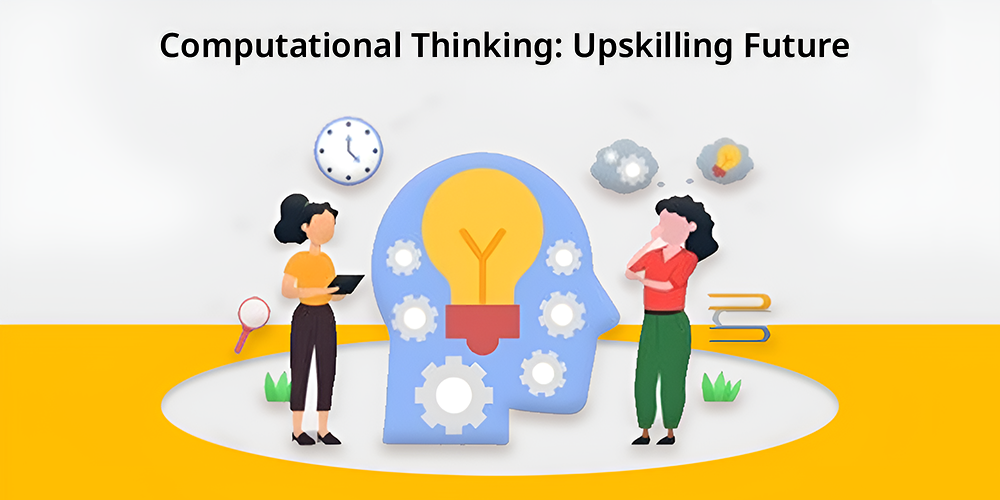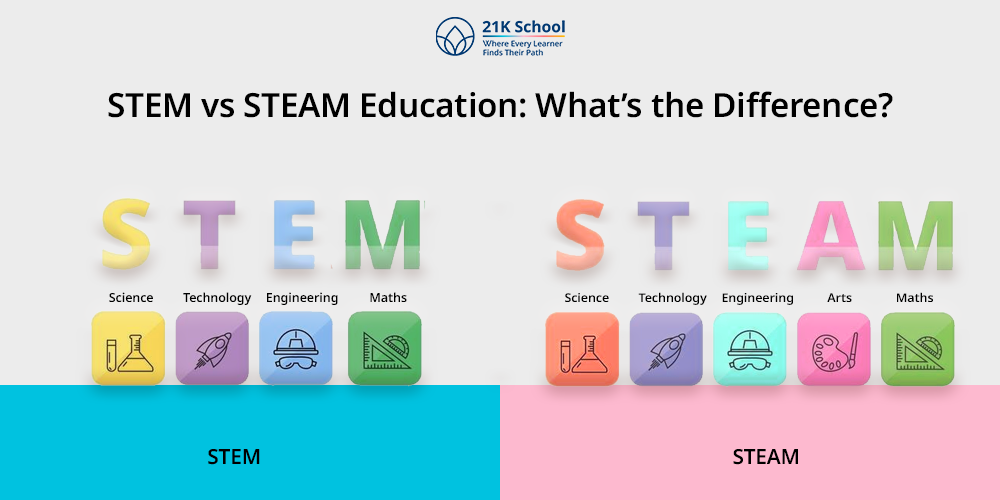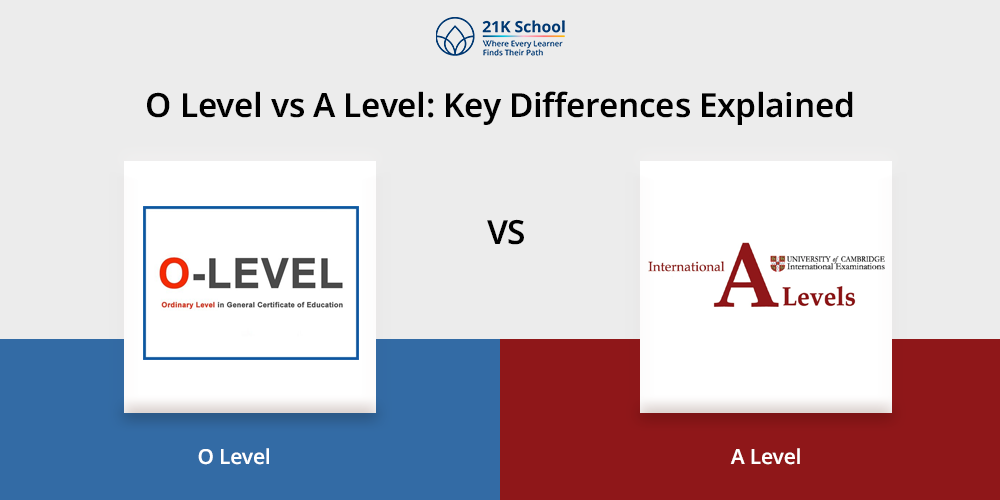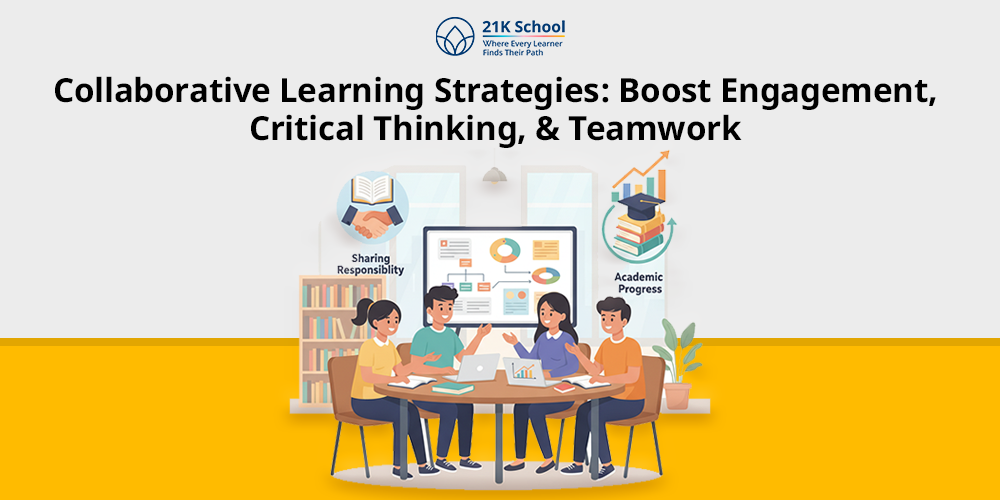
Today, since our world is becoming more digital, figuring out solutions through critical thinking is crucial.
It can be seen that technology affects nearly every part of life. Therefore, Computational thinking has become essential for computer scientists and those trying to handle all the challenges of modern life.
It’s not limited to learning how computers operate. But , it surely requires you to divide a problem into understandable chunks. And then, find common patterns, pull out important details and decide on a series of moves to solve it.
In this article, we will discuss the main ideas and steps of computational thinking. We will also recognize its importance in many professions and assess how it shapes progress in education, technology and careers.
Contents
- What is Computational Thinking?
- Why is it Important to Focus on Computational Thinking?
- Core Elements of Computational Thinking
- Processes Involved in Computational Thinking
- Implementation of Computational Thinking In Schooling
- Real World Applications
- Examples of Computational Thinking
- Computational Thinking and Problem Solving
- Finding Balance Between Computational Thinking and Humanly Factors
- The Future of Computational Thinking
- Conclusion
What is Computational Thinking?
Computational thinking is an approach to solving problems by relying on core ideas from computer science. In 2006, Jeanette Wing made the argument that computational thinking is important for all individuals.
And not only for people who study computer science. Wing argued that Computational Thinking(CT) is important because it helps people develop thinking patterns similar to those used by computers.
Computational thinking handles a problem in bits, spot patterns, filters out unnecessary things and sets up algorithms to overcome it. This concept is applied in areas such as mathematics, engineering, healthcare, business and art.
Although coding and programming are involved in CT. The way of thinking from CT can assist in handling real-life challenges in a timely manner.
Take a minute here to learn more about coding for kids.
Why is it Important to Focus on Computational Thinking?
With the growing demand for real skills like problem-solving along with creativity, computational thinking can not be laid behind. In almost every sector of living, this skill has made its performance.
People are curious to know and implement it through various means in their lives. Some of the key roles are discussed below:
1. Roles in Computer Science
Computer science relies on computational thinking to help solve problems. This allows programmers to create programs, algorithms and systems that deal with important challenges.
AI, machine learning and data science use computational thinking to help with organizing data and making decisions by recognizing patterns. Programmers make heavy use of computational thinking which is essential for computer science.
A programmer uses CT to analyze problems, solve them and improve systems. The process of writing code wouldn’t be clear and precise enough without computational thinking.
2. Importance in Today’s Digital World
Now, technology impacts almost every part of human life. Computational thinking is what helps us use both our phones and AI-driven technology in useful ways.
Explore the future of artificial intelligence in education.
The ability to handle serious problems logically and with reasoning helps staying competitive in today’s world relying heavily on algorithms. These days, with the world advancing so quickly, everyone can benefit from thinking computationally.
It’s meant for anyone who seeks to succeed in a world full of technology. Healthcare, finance and entertainment are just some areas where computational thinking is gaining importance.
3. Preparation for Future Jobs
With technology evolving, more organizations seek people who can think computationally. This applies most to areas like data science, creating software, cybersecurity and automation.
Yet, CT has value in areas beyond the technical sector. Many sectors are acknowledging that using computational thinking strengthens creativity, problem-solving skills and productivity.
Here are some of the future technology jobs in the 21st century.
4. Help in Solving Problems
This technique is a key asset when it comes to solving problems. It simplifies difficult problems by handling them one small section at a time.
CT points out tasks to handle a community event such as setting a budget, making a timeline and distributing resources. This helps to create an orderly system for handling issues.
Furthermore, CT allows for discovering patterns and creating methods that can be used again. If one detects similarities in various issues, it becomes possible to develop strategies that can be used again which saves both time and effort.
For students who need more assistance, here’s how to improve problem-solving skills. ?
Core Elements of Computational Thinking
Solving problems and building effective solutions in computer science is based on a few main principles of computational thinking. They can be useful in coding and also in our regular activities.
1. Decomposition
Decomposition helps by breaking a difficult problem into simpler sub-problems. At this point, things that seemed insurmountable are made much less complicated.
It enables you to pay attention to one aspect of the process which aids in handling the task step by step. For instance, consider planning a trip before you go.
Planning proceeds by assigning each step of booking, selecting location, making reservations and planning a day-by-day timetable to smaller sub-tasks.
Decomposing the problem helps you manage each area more efficiently and eventually find a solution to the issue at hand.
Decomposition can’t be done without analysing the issue thoroughly. To have this quality, it’s crucial to develop a child’s problem-solving and analytical skills.
2. Pattern Recognition
To do pattern recognition, you must look for similar behaviors or features in the problem you are analyzing. If you notice a pattern, you can use your past experiences to develop a solution.
This allows us to guess the answer and avoid having to start from the beginning every time. Common code arrangements and algorithms are examples of what pattern recognition may find in coding.
Pattern recognition can be used in real life to notice customer habits. Moreover, spot issues that keep coming up in a project and anticipate the most suitable times to release a new product.
3. Abstraction
In abstraction, we look only at the important details while leaving out the extra or irrelevant aspects. When you do this, you don’t have to cope with unnecessary information and can quickly focus on solving the problem.
When we drive a car, knowing all about the engine is unnecessary. The main thing is understanding how the steering, gas and brake pedals function.
In programming, thinking about only the key aspects needed to accomplish the goal is called abstraction.
4. Algorithm Design
An algorithm is a series of rules that helps solve a particular issue. Algorithms are either designed as code or manual steps for addressing issues in the real world.
If you want to bake a cake, you look at the directions to guide your actions. When working with big data, complicated algorithms are sometimes applied to help with sorting, math formulas and image identification.
Don’t forget how to explain algorithms to your kids. ?
Processes Involved in Computational Thinking
The process includes numerous steps that have to be worked through repeatedly for the best solution.
1. Problem Identification
Computational thinking begins when the problem you want to address is identified. It requires identifying the key issue and figuring out the solution.
If the problem is not fully understood, any solution aimed at it would go astray. A company hoping to keep customers from leaving could first notice that many subscribers are churning out.
By understanding the problem well, they are able to look for a specific solution.
2. Algorithmic Expression
After the problem is found, you should express it step by step as an algorithm. You could tap into coding, draw a flowchart or organize the tasks into a list.
An online shop could suggest items to customers using an algorithm created to study their past purchases.
3. Solution Implementation
After the algorithm is finished, solution implementation has to be put into practice. This is the point when you implement your plan.
This means that the first step of software development is to write the code. Also, it could refer to actual practical use such as running a trial, deciding on something or introducing a new process.
4. Evaluation
At the end, computational thinking involves evaluating the solution. After the solution is put in place, you should check if it addresses the issue effectively.
If not, you will have to update the algorithm and continue with the process. A/B testing can be used by a company to test different designs for their site.
And find out which keeps users more interested. Once the results are available, the team may improve or refine the layout more.
Also enlighten yourself with the difference between assessment and evaluation.
Implementation of Computational Thinking In Schooling
Modern schools recognize the need for their students to learn computational thinking. Schools are preparing their students by introducing them to CT at a young age.
As the world will need technology more in the future. Originally, the use of computational thinking was limited to STEM and computer topics.
But now it is part of the curriculum for all academic fields.
1. Early Education
At early education level, computers are used to teach basic computer skills using fun and easy puzzles, games and activities. They may, for example, do sequencing puzzles that urge them to follow a particular set of steps.
Or use software that tests their critical-thinking skills.
2. Secondary Education
At the secondary level, computational thinking is better organized. Students first learn to use Scratch, Python or JavaScript.
Thus, applying concepts such as splitting up a problem, remaining focused on the right information and using instructions in sequence.
Thanks to this, students are able to develop an app for a social purpose, tackle scientific questions or work with historical data.
3. Higher Education
Computational thinking is included in computer science departments of universities. It is also used in areas such as engineering, business and healthcare.
Advanced algorithms, machine learning and data structures are introduced to students. But concepts from computational thinking can still apply everywhere.
More colleges and universities are introducing interdisciplinary courses on CT for non-technical majors. This is to help all students deal with tough issues in healthcare, marketing or environmental science.
Real World Applications
Solving problems and increasing innovations in industries can benefit greatly from using computational thinking. There are many examples of computational thinking used in everyday and industrial settings.
1. Industrial Applications
Electronics:
Automotive and electronics industries rely on computational thinking to improve the use of robotics and automation in factories. When companies separate manufacturing processes and use algorithms to improve them, goods are created quickly and at a lower expense.
Health Sector:
In healthcare, computers help diagnose patients by noticing trends in their information and aiding in scheduling medical interventions. Artificial intelligence and machine learning make use of CT to review a large amount of data.
It includes detecting trends that a human doctor might miss.
Finances:
Banking and finance industries use computational thinking for detecting fraud, reviewing risk and carrying out algorithmic trades. An analysis of large datasets helps institutions spot any unusual patterns and secure their finances.
Retail & Ecommerce:
Firms such as Amazon and eBay rely on computational thinking to better manage inventory. Like suggesting products to customers and figuring out the best way to deliver items.
Machine learning is guided by computational thinking to correctly predict what customers want and improve their experience.
Supply Chain & Logistics:
Firms in logistics resort to computational thinking to plan efficient routes, lower their transportation bills and guarantee deliveries on time. Using algorithms helps to handle stock in the warehouse and choose the most cost-effective way to deliver goods worldwide.
2. Daily Applications
The concepts of computational thinking are used both in professional workplaces and in daily activities. Using known approaches can support us when dealing with daily tasks such as time-management skills and our finances.
Time-Management:
We can manage our time by focusing on smaller tasks. And by noticing how we tend to use our time, we can become more productive during the day.
Apps, like Google Calendar or Todoist, plan our schedules by importance and use algorithms to help us stay more productive.
Decisions:
Computational thinking helps us to choose the best way to avoid traffic and decide what groceries to buy based on sales.
Personal Budgeting:
To manage personal finances, people should spot their usual spending, reduce unnecessary costs and decide how much to save. You can use Mint or YNAB to design your own system for following your income, expenses and investments.
Home Automation:
Many individuals take advantage of smart systems (e.g., Alexa, Google Home). These apply computer skills to control appliances like heaters and lights based on set plans or situations.
Travel and Navigation:
With their ability to handle live traffic information, apps such as Google Maps and Waze help you choose the best route. They make sure to update their algorithms regularly for easy navigation.
Examples of Computational Thinking
We use computational thinking in many situations beyond technology such as in science or medicine. This section includes examples of problem-solving with computational thinking.
1. Medical Analysis
While making a medical diagnosis, doctors analyze each symptom separately. They find patterns in patients’ medical records. Then, guess the most likely reasons for the symptoms (abstraction) and plan outlines for each test and treatment (algorithmic design).
Algorithms are helpful, as they allow MRI analysis to notice patterns in pictures that might be simply too difficult for a human to spot.
2. Environmental Sciences
Through computational thinking, scientists can study climate change, risk of deforestation and find effective uses of energy. Using data and modeling, they forecast upcoming changes in the environment and set up plans to reduce any harm.
3. Business Decision-Making
With computational thinking, business leaders and managers identify issues, see patterns in data and come up with effective solutions. Use sales figures to find out which items bring the highest revenue and then organize your inventory storage system accordingly.
Computational thinking is so much required for inculcating an entrepreneurial mindset.
4. Agriculture
Farmers apply computational thinking to improve irrigation, determine the quantity of crops grown and watch over the soil’s status. Data from drones and sensors is processed using algorithms.
This is to set the best way to plant and predict when the crops will be harvested.
5. Social Media and Curated Content
Computational thinking is used on Facebook, YouTube and Spotify through their recommendation algorithms. Personalized suggestions for rules are provided when they analyze users’ actions and what they like.
This is what 21K school also works on to provide personalised learning to each of their students.
6. Transportation and Traffic
In cities, people use computational thinking to arrange traffic systems and organize the timetable for public transport. Optimal routes are set for bus or train through algorithms and traffic sensors ensure that traffic signals are adjusted accordingly.
This type of thinking can benefit people apart from those in computer fields.
Thanks to statistics, people from different walks of life can tackle difficult tasks, make logical judgments and address problems.
Computational thinking is useful in healthcare, at work or when dealing with your own finances and projects.
With many examples and practical uses, it is easy to see that computational thinking helps people manage the demanding problems.
Computational Thinking and Problem Solving
The approach of computational thinking helps in solving various kinds of problems. In essence, computational thinking helps individuals tackle big problems by dividing them into smaller ones.
Identifying consistent patterns, removing unwanted details and creating routines help people approach different problems more logically.
For this reason, computational thinking is beneficial in many areas, supporting people in developing answers to tough challenges.
This is how computational thinking helps to address issues:
1. Problem Identification
The first thing to do when tackling a problem is to break it down into simple and easy-to-handle sections. If you have to complete a lengthy work project, organise the steps as research.
Carrying it out and gaining feedback will help you stay organized and relaxed. If you split the problem into easy parts, it’s simpler to deal with challenges and give attention to only one thing at a time.
2. Pattern Recognition
After seeing the parts of the problem, you can observe what is the same. And then, repeat the approaches that were successful in the past.
For instance, pattern recognition allows one to look up familiar issues. And also the methods to solve them, making the process both quicker and more efficient.
3. Abstraction
Abstraction enables people to neglect unnecessary details and concentrate on what really matters in the problem. When creating software, programmers use abstraction to only highlight the main elements.
Then, further break the problem down to its essential points. Breaking up a problem at this step allows it to be more easily addressed.
4. Algorithmic Design
The last step of the process is to design an algorithm that covers the sequence of steps needed to solve the problem. Using algorithms, people are able to apply their understanding and form an actual plan for execution.
No matter if you need to create a software app or plan out a personal objective, algorithms guide you with their instructions.
Following these guidelines in computing, individuals can find quicker solutions and be ready to solve problems that aren’t always clear.
Finding Balance Between Computational Thinking and Humanly Factors
It is well said that computational thinking is very efficient and clear. However, we should understand that it fails to cover certain aspects that are important to people.
We are different from machines thanks to our judgment, empathy, creativity and intuition. And they will always matter in situations calling for emotional skills, good morals, and original solutions.
Reason why we must balance computational thinking and human factors:
1. Human Creativity and Intuition
Computational thinking is best applied to problems that have known in and outgoing data. Often, coming up with original ideas takes place where there is no obvious choice.
When facts fail, creativity and a sense of intuition allow for new ways to find solutions.
Whether it’s making new products or creating artistic works, humans can do things that computers cannot by using their imagination.
2. Empathy In Decision Making
In healthcare, schools and selling goods, showing empathy is essential and cannot be replaced by anything else. Computational models play a role in automating test procedures, making services more efficient and boosting the hospital’s workflow.
Yet they are not able to show the emotional touch that a human caregiver can give. For example, empathy is very important in mental health.
And because of this patients cannot be supported or helped unless their feelings are understood by caregivers.
3. Making Decisions Ethically
Although taking care of routine chores can be automated, the system still needs human oversight for moral reasons. If algorithms and logic have biased characteristics, machines can follow these errors by design.
People should always be involved when making choices that rely on ethical, fair and moral principles. For example, in the justice system or during hiring.
Even when a candidate doesn’t have the documented certificates or legal proofs, a human intuition can give better judgements.
4. Adaptability
Computers are able to work with what is planned for them. Yet humans are more flexible when facing situations they were not prepared for.
It is crucial in these areas, since they are rapidly evolving and unpredictable events occur regularly.
If we strive for an ideal kind of future, computational thinking will cooperate with our intuition. Putting along empathy and creativity to help us solve problems more efficiently.
Though machines will surpass humans in rote job areas. Still, humans are still the best at making decisions and thinking for jobs that need attention, feelings and unpredictability.
The Future of Computational Thinking
Computational thinking is set to have a particularly promising future. Over time, computational thinking will play a greater role in our lives both at work and at home.
And not only for those working in the tech industry. This is what you can expect from the future of computational thinking:
1. Extensive Integration into Education
As soon as digital literacy becomes more valued in teaching, computational thinking will be added to all levels of education. AI will not only be found in computer science, but also in social sciences, business, healthcare and the arts.
Once students grasp computational thinking, they will learn to solve problems in a step-by-step manner. And this will help them become critical thinkers in every field.
2. AI and Automation
As AI grows, having strong computational thinking skills will help in the process of designing and supporting AI. People in the future should be aware of both the operations and the ethics of algorithms in practical circumstances.
Consequently, there will be a greater need for those who can connect their knowledge of technology with social responsibility in AI.
3. Cross-Disciplinary Innovation
Coming years of computational thinking will involve close partnerships with experts from different areas. To cope with complex, related problems, biotechnology, environmental science and robotics will need to use computational thinking.
Introducing computational thinking into healthcare, renewable energy, transportation and similar fields will result in new and exciting innovations.
4. Democratization of Technology
Because of democratization of technology, non-technical individuals will be able to engage in and shape various advancements in technology. There are easier tools to write code, automate work and analyze data.
Both teachers and entrepreneurs will join the digital economy. This will lead to an increase in demand for people with computational thinking abilities.
Overall, the future of CT lies in making sure that people are prepared to use and benefit from important technologies.
Because computational thinking is everywhere, it will be important for finding solutions and for navigating the digital world in general.
Conclusion
Being able to solve problems in a logical system is important nowadays. And for this, computational thinking helps in various fields and common situations.
Computational thinking gains advantage by simplifying tough problems, finding repeating ideas, removing unneeded aspects and forming algorithms.
Since technology is developing rapidly, including it in school curriculum is necessary to prepare the next generation for their careers.
Computational thinking supports human understanding and creativity by increasing the likelihood of improving innovation and choosing the right way forward. The importance of computational thinking is increasing as it helps people work with the challenges brought by the digital era.



